
DRINKER TYPES Hot summer days have meant we have had to carefully think about the drinkers we deploy in the chicken enclosure. There are many different drinkers available on the market. The type we choose is dependent on what we want to do with them. For example, when we have young chicks in the flock high tripod drinkers are not appropriate and in summer, we have many different ages of chickens from day olds to adults.
The photograph below shows some of the different types, but let’s go through some of the advantages and disadvantages so you can choose the right drinker:
1. This is a 1.5l plastic drinker that has a small capacity so isn’t very suitable for adult hens but it’s a great size for our chicks as a first drinker. We ensure all of our chicks have access to a drinker inside the coop on hatch although, don’t panic if you don’t do this. They don’t need water until 24-48 hours after hatching as they continue to be sustained by the remainder of the yolk from the egg for that period.
2. This is a nipple drinker which again is a great drinker for chicks and can be used for adults but a large capacity reservoir would be advisable.
3. This is a drinker that we love. It’s sustainable as it’s not oil based plastic but made from plant products. It has an internal reservoir so is easy to fill. Not suitable for chicks, but great for point of lay and adult chickens.
4. A galvanised drinker has great longevity. Plastic can degrade over time in the sunlight and is more likely to generate algae as they let sunlight in but galvanised drinkers will last much longer. The downside is that if you choose to add cider vinegar to the water to support gut health, the acid will react with the zinc coating on the steel which will leech from the drinker and can be toxic.
هذه القصة مأخوذة من طبعة August 2023 من The Country Smallholder.
ابدأ النسخة التجريبية المجانية من Magzter GOLD لمدة 7 أيام للوصول إلى آلاف القصص المتميزة المنسقة وأكثر من 9,000 مجلة وصحيفة.
بالفعل مشترك ? تسجيل الدخول
هذه القصة مأخوذة من طبعة August 2023 من The Country Smallholder.
ابدأ النسخة التجريبية المجانية من Magzter GOLD لمدة 7 أيام للوصول إلى آلاف القصص المتميزة المنسقة وأكثر من 9,000 مجلة وصحيفة.
بالفعل مشترك? تسجيل الدخول
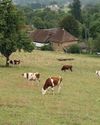
How to Buy a Smallholding in France- Long-time smallholder Lorraine Turnbull looks at the practicalities of moving to rural France
Aspiring smallholders are continually thwarted by the prices of smallholdings and property with land located within the UK. Even the humblest croft in Scotland comes with a substantial price tag and conditions which would make even an adventurous wannabee consider carefully. But all is not lost. For those willing to take the adventure of a lifetime, there is always Europe, and one of the most popular places is France.

Meet the Bournemouth goats and their supporters
These capricious animals are hard workers preserving the natural habitat

Still warm enough to sit outside with a Pizza
Henrietta Balcon uses fresh figs to create an unusual dish at Harvest time
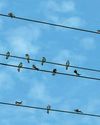
Goodbye to the birds of spring and summer
If you look and listen you might be able to see them preparing to leave says The RSPB

Get ready for the colder weather in the warmth of late summer
Claire Waring advises on doing the best to make sure your colonies survive until next spring

Preparing the Veg Patch for Winter
Lee Senior says, a well-run plot can excitingly continue to produce good quality, tasty, fresh food for much of winter
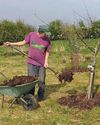
Time to prepare to plant your orchard
Wade Muggleton, smallholder and author of The Orchard Book, shares his practical experience so you can create your own fruit collection
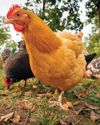
Choosing feed for the autumn
As autumn approaches, Joanna Palmer, nutritionist at the Smallholder Range, offers advice on choosing the right feed to support your adult birds through their annual moult and ensure your young birds grow and finish well at this time of the year.
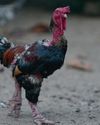
Vet advice from an experienced poultry vet
Reflecting on how much the humble hen has helped people world wide plus advice on stopping the scourge of red mite

Give your hens some support
Paul Donovan looks at the right and wrong ways of handling birds